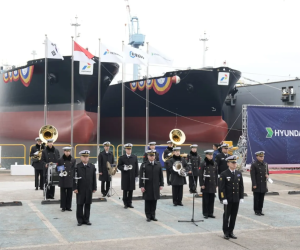A B C D E F G H I J K L M N O P Q R S T U V W X Y Z
Aircraft Pallet
A platform of standard dimensions that is used for assembling goods which is secured by nets and straps prior to being loaded as a unit onto an airplane. Palletizing results in an efficient use of space and improved cargo handling.
Air Freight
A service that provides for the air transportation of goods. This mode of transportation allows for decreased shipping time, low damage ratios and for certain commodities, lower shipping costs.
Air Freight Forwarder
An Air Freight forwarder provides pickup and delivery service to and from the shippers dock. Responsibilities also include consolidating shipments from various shippers into larger units, preparing shipping documentation and tendering freight to the airlines. Forwarders do not generally operate their own aircraft and may be classified as an "indirect air carrier".
Air Waybill
A document issued by a carrier to a shipper that supplies written evidence regarding the receipt of goods, the mode of transportation and the arrangement to deliver goods at the requested destination to the lawful holder of the bill of lading. A standard air waybill accommodates both domestic and international traffic.
All-Cargo Aircraft
An aircraft used for the sole purpose of transporting cargo only, rather than the combination of passengers and cargo. Freight is loaded in the bulk or container on the main or lower deck of the aircraft.
All-Risk Insurance
The broadest form of coverage available, providing protection against all risk of physical loss or damage from any external cause, such as fire collision, pilferage, etc. Does not cover loss or damage due to delay, acts of war, labor strikes, per-shipment conditions, inadequate packaging, or loss of market. All risk insurance of air shipments generally excludes loss due to cold or changes in atmospheric pressure.
Aviation and Transportation Security Act (ATSA)
A bill passed November 2001, to improve aviation security in all modes of transportation.
Bill of Lading
A document issued by a carrier to a shipper, signed by the captain, agent, or owner of a vessel, furnishing written evidence regarding receipt of freight, the conditions on which transportation is made and the date to deliver goods at the prescribed port of destination to the lawful holder of the bill of lading.
Billed Weight
The designated weight shown on an invoice and/or waybill used to calculate freight charges.
Bonded Terminal
An airline terminal that is approved by the U.S. Treasury Department for storage of goods until Customs duties are paid or the goods have been released.
Breakbulk
Unpacking or disassembling a portion or all contents of a consolidated shipment for reconsignment or delivery.
Broker
An individual or firm that acts as an agent for others, often between a buyer and a seller, in return for a fee or commission.
Bulk Cargo
Cargo stowed loosely in the hold of a ship and is not enclosed in a shipper container or box. Examples include oil, ore, grain or coal.
Cargo
The goods or merchandise transported by airplane, ship or vehicle.
Cargo Manifest
A list of cargo being transported or warehoused, without listing the applicable charges.
Carrier
Any individual or firm who, through a contract of carriage, undertakes to perform or procure the performance of carriage by rail, road, sea, air, inland waterway, or by a combination of modes.
Cartage Agent
A ground transportation service that provides pickup and delivery of freight in locations not served directly by an air or ocean carrier.
Certificate of Origin
A document containing an affidavit to prove the origin of imported goods. It is often required by the custom as part of the entry process. Certificates of origin are commonly certified by an official organization in the country of origin such as a consular office or a chamber of commerce.
Chargeable Weight
The weight or volume of a shipment used in determining air, vehicle or ocean charges. The chargeable weight could be the dimensional weight or on container shipments, the gross weight of the shipment minus the containers tare weight.
Charter Service
Arrangement of a temporary transportation service on an as needed occasion for the movement of cargo or passengers.
Classification
A systematic categorization of cargo for the purpose of applying class rates, combined with governing rules and regulations for transportation. In customs, the classification determines the duty status of imported merchandise within the Harmonized Tariff Schedule of the United States(HSUS). The classification is the responsibility of an importer customs broker or designated individual preparing the entry papers.
Clearance
The completion of customs entry requirements resulting in the release of goods from customs authority to the importer.
Commercial Invoice
A required document identifying the transaction between a seller and buyer. The form should have the invoice number, date, shipping date, the mode of transport, delivery and payment terms, description of goods and the quantity. The government uses the commercial invoice to determine the true value of goods for assessing custom duties and prepare documentation.
Custom requires a commercial invoice that includes the following information. (1) The port of entry. (2) Name of shipper and receiver. (3) Description of items. (4) Quantity in weight and measures. (5) Country of origin. The invoice and any attachments must be in the English language.
Consignee
The person or company named on the freight contract to whom goods have been consigned or turned over.
Consolidation
A number of separate shipments that are assembled into one shipment for movement on one waybill from one location to another. Consolidation of cargo can result in reduced shipping rates.
Container
A reusable, rigid exterior shipping box that is used to ship goods by ship, truck or rail. Air Freight containers ULD or unit lead devices) are available in a variety of shapes and sizes.
Container Yard (CY)
A facility for holding FCL (full container load) and empty containers that are received from or delivered to consignors or consignees by or on behalf of a carrier. It also provides a location to receive merchandise from consignors for packing into containers.
Cubic Foot
The unit of volume measurement that is equaled to 1,728 cubic inches.
Customs
The designated government authority that regulates the flow of goods to/from a country and collects duties levied by a country on imports and exports.
Customs Clearance
The procedures involved in getting cargo released by Customs through designated formalities such as presenting import license/permit, payment of import duties and other required documentations by the nature of the cargo such as FCC or FDA approval.
Customs Duty
A tax levied and government collection by custom officials of duties that is imposed by law on imports.
Dangerous Goods
Articles or substances capable of posing a significant risk to health, safety, or property when transported by air and that require special attention when being transported.
Deferred Air Freight
Air Freight shipments that are not time sensitive and can be delivered at a lower cost on later flights. Delivery service is as a rule, between three to five business days.
Demurrage
A penalty for exceeding free time allowed for loading or unloading at a pier or freight terminal.
Density
The weight per cubic foot that is determined by multiplying the length, width and height of a container and dividing the total by 1728.
Dimensional Weight
A calculated weight based on a minimum density requirement. Density is the weight per cubic foot of a shipment of cargo. It is computed by dividing the shipment volume by the minimum density requirement. The dimensional weight rule was developed to insure fair compensation to low density shipments under which the transportation charges are based on a cubic dimensional weight rather than upon actual weight.
Durable Goods
Product that is not consumed through use, such as automobiles, furniture, computers and machinery.
Duty
A tax levied by a government on merchandise imported, exported from another country. Duties are based on the value of goods, while other factors include weight on quantity or combination of value and other factors (compound duties).
Entry
A documentation of the kinds, quantities and values of goods imported together with duties due and declared before a customs officer. It is required to secure the release from customs custody.
ETA
Acronym for Estimated Time of Arrival of a carrier.
Export
To transport goods away from a country for sale to another country.
FAK
Refers to Freight All Kinds. Consolidated cargo that is shipped at one rate. FAK cargo is usually shipped in a container filled with a variety of merchandise or commodities.
Federal Aviation Administration (FAA)
Federal Aviation Agency was created in 1958 and appointed with the responsibility of making known of the operational standards and procedures for all classes of aviation in the United States. The FAA monitors any/all dangerous goods (HAZMAT) for air cargo transportation.
Federal Communications Commission (FCC)
A federal agency responsible with regulating interstate and international communications by television, radio, telephone, telegraph, as well as broadcasting standards and cable television operations. Customs clearance may rely on FCC approval regarding the nature of the cargo.
Food and Drug Administration (FDA)
The United States agency responsible for regulation of biotechnology food products. Customs clearance may rely on FCC approval regarding the nature of the cargo.
Foreign Trade Zone (FTZ)
Special restricted-access commercial and industrial areas in or near ports of entry that are designated by the government for duty-free entry of any non-prohibited goods. Foreign and domestic merchandise, including raw materials, components, and finished goods may be stored, displayed, and used for manufacturing within the zone and re-exported without duties being paid. Duties are imposed only when the original goods or items manufactured from those goods pass from the zone into an area of the country subject to customs authority.
Freight Forwarder
An independent business that dispatches shipments for exporters for a fee. Transportation can include shipping by land, air, or sea, or other resources. Usually it handles all the services connected with an export shipment, including full preparation of documents arranging for shipping, warehousing, delivery and export clearance.
Full Container Load (FCL)
A delivery of cargo that fills a given container either by bulk or maximum weight.
Full Truck Load (FTL)
A shipment of cargo that fills a given tractor trailer either by bulk or maximum weight.
Goods
Merchandise, supplies, raw materials, commodities and finished product. All things are treated as moveable and indicated as sold to a particular buyer.
Gross Weight
The full weight of a shipment, including containers and packaging materials.
Harmonize Tariff Schedule of the United States (HTS or HTSUS)
An organized listing of goods and their duty rates which is used as the basis for classifying imported products and identifying the rates of duty to be charged. The tariff schedule is divided into a variety of sections and chapters dealing independently with merchandise in wide-ranging product categories. The U.S. International Trade Commission is responsible for publishing the information.
Igloo
A container designed to the dimensions of the full main deck width of carrying aircraft.
Importer
The individual firm or legal entity that brings goods from a foreign source into a customs territory during the course of trade.
Imports
To bring in commodities from a foreign country that have been processed or assembled in other countries.
In-Bond
A customs program for inland ports that provides for cargo arriving at a seaport to be shipped under a customs bond to a more conveniently located inland port where the entry documents have been filed. Customs clears the shipment there and the cargo is trucked to its destination, which normally is close to the inland port.
Indirect Air Carrier (IAC)
An organization or entity, within the United States, not in possession of an FAA air carrier operating certificate, that initiates to engage indirectly in air transportation of property and uses for any part of such transportation of services to a passenger air carrier.
Inland Port
Sites located away from traditional borders where international trade is processed and value-added services are available.
Interline Shipping
The movement of a single shipment via two or more carriers.
International Air Transport Association (IATA)
A trade organization of airlines that works together offers the highest possible standards to passengers and cargo shippers.
Less Than Container Load (LCL)
Freight is combined with other freight from other shippers. A container can be loaded with LCL cargo at a container freight station for LCL delivery.
Less Than Truckload (LTL)
Freight from several shippers loaded onto an individual trailer. The shipment is based upon a separate rate than truckload rate. LTL is in contrast to TL, which is only one shipment from one shipper that is loaded on a tractor-trailer.
Lower Deck
Compartments on the lower, or lowest cargo holding area of an aircraft. This is located below where the passengers sit.
Master Air Waybill (MAWB)
The air waybill of lading that provides data on a consolidated shipment of goods. The consolidator is shown as the shipper.
Net Weight
The total weight of a shipment less the weight of pallets, containers or straps.
Non-vessel Operating Common Carrier (NVOCC)
A carrier who issues bills of lading for carriage of goods on vessels that are not owned or operated by them.
Overnight
Expedited service on a transaction where service is required on the next business day. Delivery service is as a rule, delivery on the next business day.
Packing List
A document prepared by the shipper that lists the kinds and quantities of merchandise in a particular shipment. A copy is generally sent to the consignee to aid in checking the shipment when received.
Pallet
A portable platform for storing or transporting freight.
Proof Of Delivery (POD)
A receipt with the signature of the recipient.
Port
A harbor where ships may anchor and unload or receive cargo.
Priority Air Freight
Reserved Air Freight or air express service where shipments have a priority after mail and small packages. The shipper pays a premium charge for this service.
Roll-on/Roll-Off (Ro/Ro)
A ship that is specifically designed to carry wheeled and tracked vehicles as all or most of its cargo. Some vessels can accommodate containers and cargo that is wheeled, tracked, self-propelled or towed vehicles and equipment. A series of external and internal ramps facilitate the loading and discharge of RO/RO cargo.
Second Day Air Freight
Air Freight shipments that are not overnight or time sensitive and can be delivered at a economic cost. Delivery service is as a rule, delivery on the second business days.
Shipment
Except as otherwise provided, the transportation of goods from one location to another, by one shipper, on one bill of lading, from one delivery location, for one consignee to one delivery.
Shipper
The company or person who tenders goods to a carrier for transportation.
Shipper's Letter of Instruction
A form used by the shipper authorizing a carrier to issue an air waybill or (BOL) bill of lading on the shipper's behalf. It contains all details of the shipment and authorizes the carrier to transport the cargo on behalf of the shipper specific instructions.
Storage
Holding a shipment in a carrier's warehouse, pending further transportation. Additional charges may be applicable.
Tare Weight
The weight of packing and containers without the goods to be shipped.
Tariff
A general term for any listing of rates or charges for the movement of goods.
Terminal Handling Charge (THC)
Fees charged by ocean containers to move containers between terminals and ships (onloading and unloading), inspecting at terminal facilities, paid by shippers (manufacturers, importers and exporters).
Transit
A journey from one location to another.
Transportation Security Administration (TSA)
On November 19, 2001 Congress enacted the Aviation and Transportation Security Act (ATSA) creating the Transportation Security Administration. The ATSA transferred all FAA rules governing civil aviation security, including IAC's to the TSA. The TSA deals with all modes of transportation: air, highway, rail, & sea.
A shipment of freight that is loaded to a trailers maximum capacity either by bulk or maximum weight.
Ultimate Consignee
The individual who is the one receiving goods for the designated end use. A customs broker cannot be listed as the ultimate consignee unless they own the merchandise or there is not U.S. buyer and the document shows the brokers premises as the location to which the merchandise is to be delivered.
Unit Load Device (ULD)
Any type of container or pallets used to consolidate packages of freight for mechanical handling.
Upper Deck
The higher or highest deck on a ship or airplane.
Value-Added Tax (VAT)
A fee levied on all goods and services as goods and services go through the production chain, from the raw material to final consumption. The amount taxed is the amount of value a particular step in the production chain added to the value of the goods or service. Volume Rate - A freight rate assessed with a specific volume of freight based upon the presumption it will increase over a period of time.








